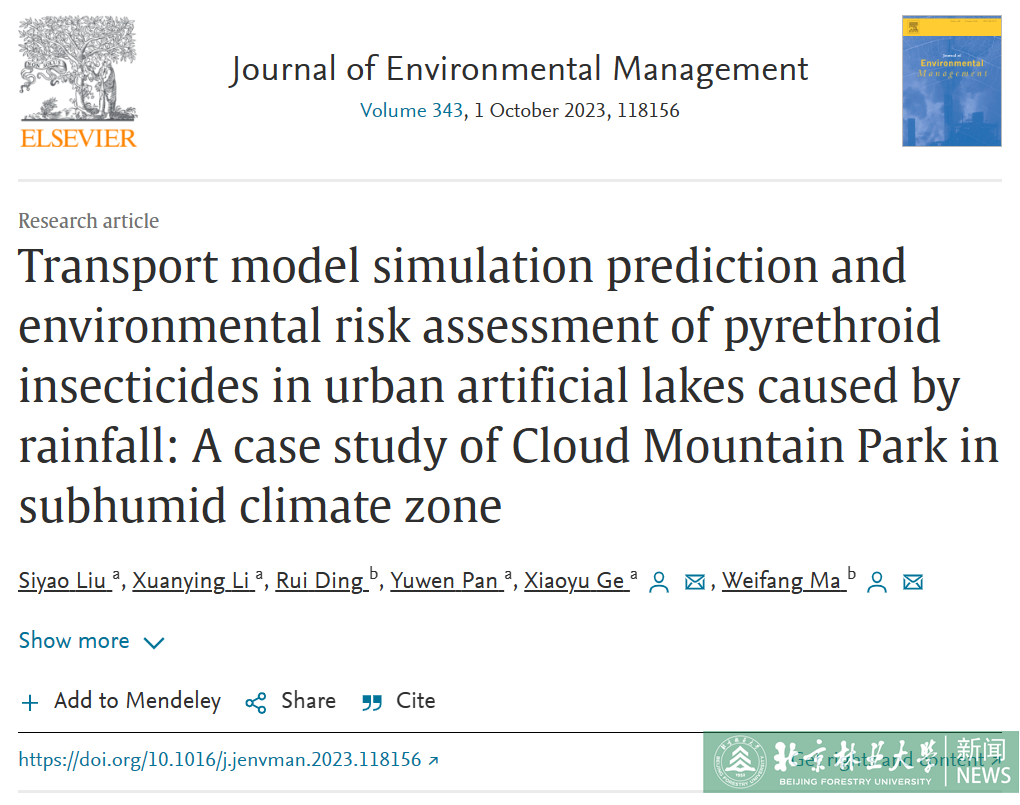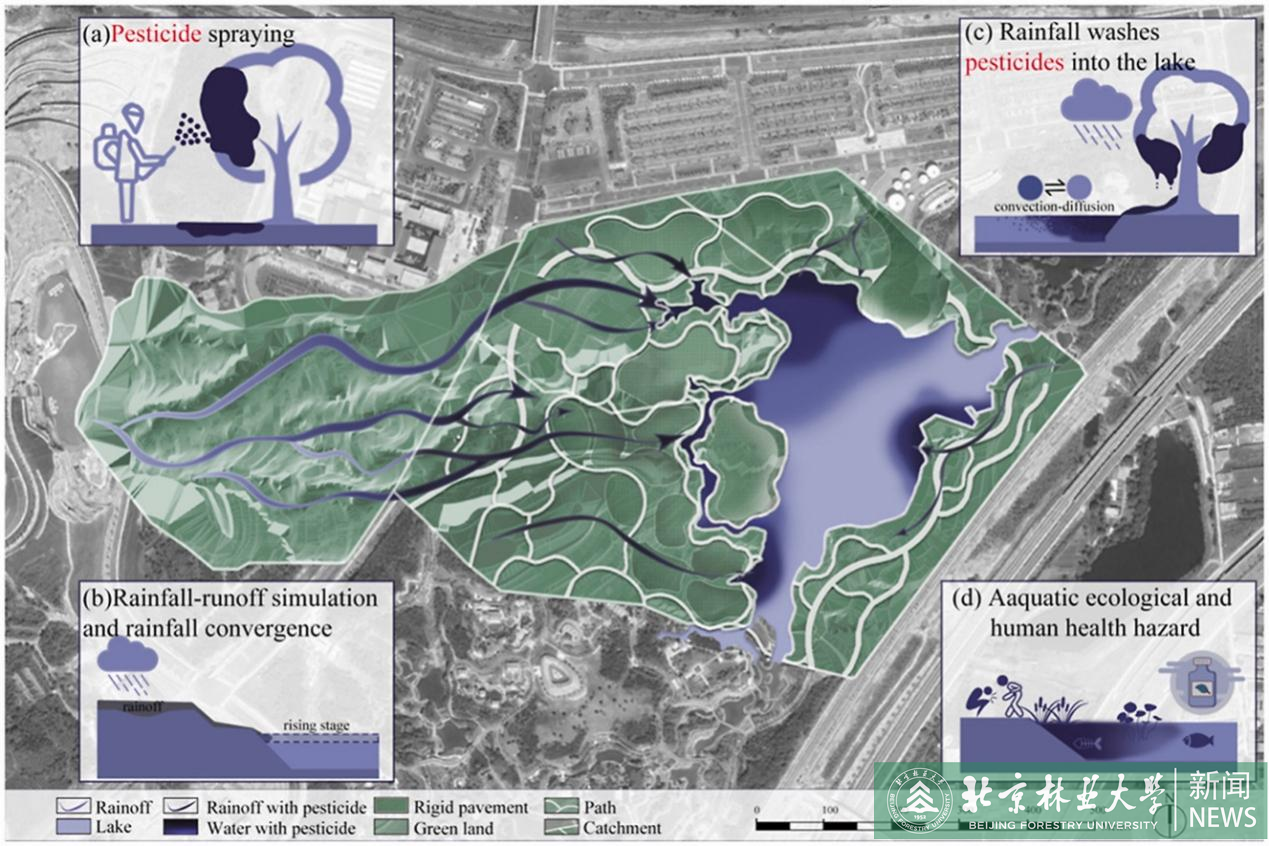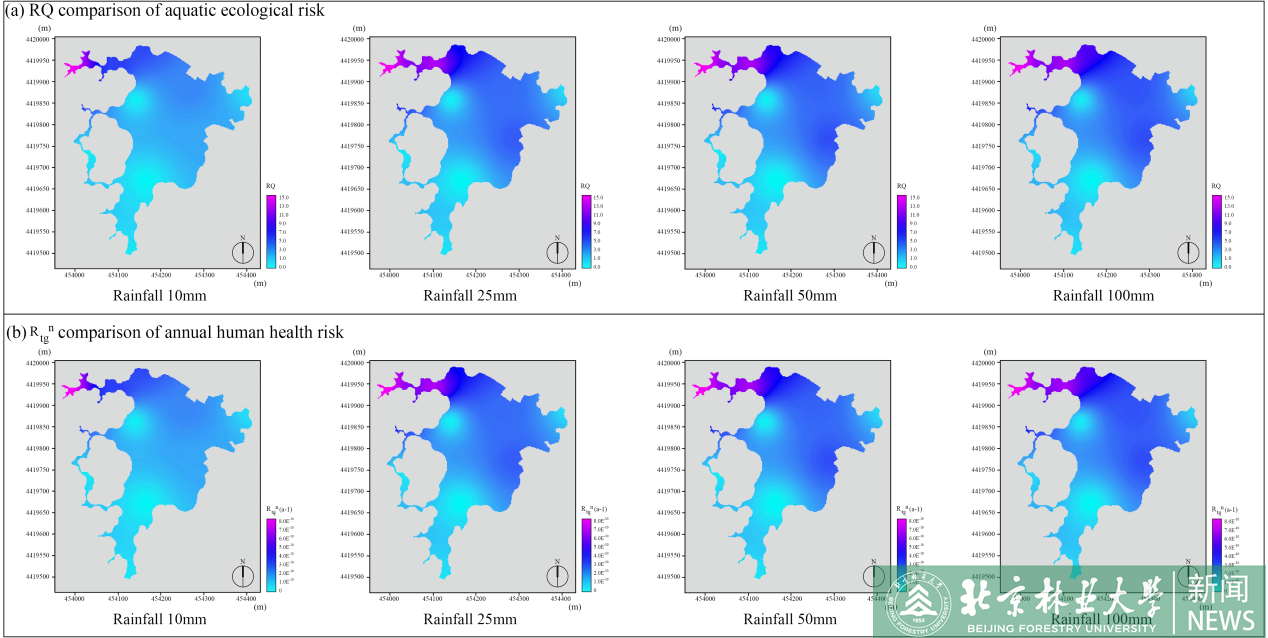Latest news
Recently, Ge Xiaoyu's research team from the College of Landscape Architecture and Ma Weifang's team from the School of Environmental Sciences have made important progress in the field of pollutant transport simulation and environmental risk assessment in urban artificial lakes. The results of the study were presented as "Transport model simulation prediction and environmental risk assessment of pyrethroid insecticides in urban areas. artificial lakes caused by rainfall: A case study of Cloud Mountain Park in subhumid climate zone" on Journal of Environment Management (JCR Q1, IF=8.91).

Pyrethroid insecticides are among urban parks' most widely used and harmful insecticides. The advanced prediction method is the key to studying the pollution and diffusion risk of plant conservation insecticides in parks. A two-dimensional advection-dispersion model was established for the North Lake of Cloud Mountain Park in the subhumid area of Hebei Province. The temporal and spatial distribution of lambda-cyhalothrin pollution required by plant growth in artificial lakes under different rainfall intensities and the time of water renewal after rainfall was simulated and predicted. According to the model efficiency (E: 0.98), mean absolute error (MAE: 0.016–0.064 cm), and root mean square error (RMSE: 0.014–0.041 cm), the prediction results showed that the model fits well. The results showed that the concentration of lambda-cyhalothrin in the artificial lake was positively correlated with the increase in rainfall intensity. Under the three scenarios of moderate rain, heavy rain, and rainstorm, the variation of total pollutants into the lake over time conformed to the first-order dynamic equation (R2>0.97), and the cumulative rates were 0.013 min−1, 0.019 min−1 and 0.022 min−1, respectively. Under light rain, the accumulation rate of lambda-cyhalothrin showed a double-linear relationship, which was in accordance with the second-order kinetic equation (R2>0.97). The rapid accumulation rate of early-stage rainfall was 0.0024 min−1, and the slow accumulation rate of late-stage rainfall was 0.0019 min−1. The human health risk assessment predicted by the simulation was lower than the hazard value (Rtgn (a-1): 9.65 E−11–1.12 E−10 a-1). However, the potential risk value to aquatic species was higher (RQ: 0.33–23.05). In addition, the increase in rainfall intensity has no significant effect on the acceleration of water renewal time. The two-dimensional dispersion model of pollutants driven by water dynamics provided relevant examples for evaluating the impact of runoff on pesticide scour in parks and supplied scientific support for improving the management of artificial lakes in urban parks.

Graphical abstract

(a)RQ comparison of aquatic ecological risk quotient under four rainfall conditions.
(b)Rtgn comparison of annual human health risk under four rainfall conditions.
Associate professor Ge Xiaoyu and professor Ma Weifang are co-corresponding authors of the article, the first author is graduate student Liu Siyao, and graduate students Li Xuanying and Ding Rui also contributed to the work. This work has been supported by the National Natural Science Foundation of China(NSFC), grant number ; the Beijing Co-Construction Project, number .
Paper link:https://doi.org/10.1016/j.jenvman.2023.118156












